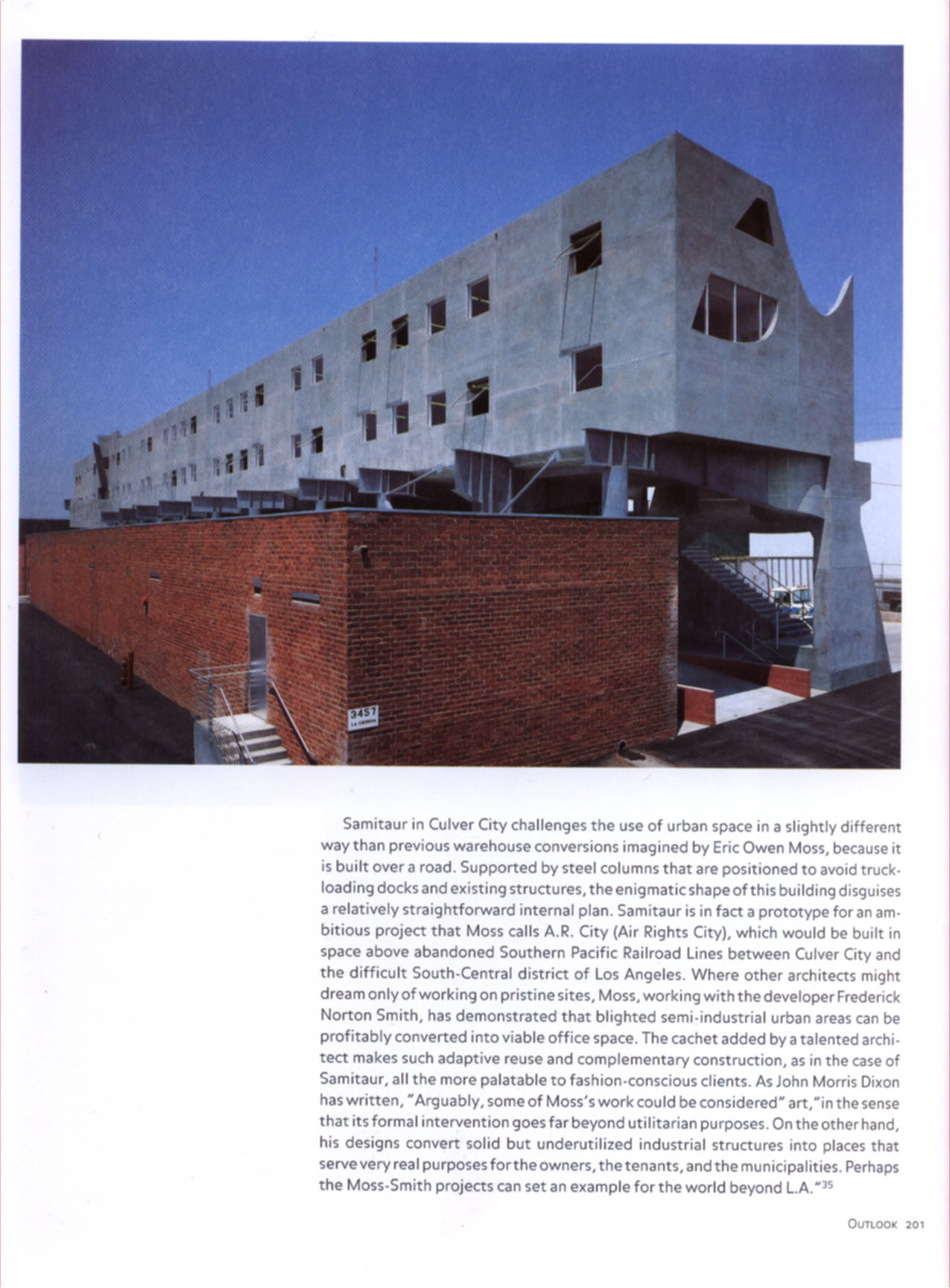New Forms Taschen 190


Samitaur in Culver City challenges the use of urban space in a slightly different way than previous warehouse conversions imagined by Erie Owen Moss, because it is built over a road. Supported by Steel columns that are positioned to avoid truck-loading docks and existing structures, the enigmatic shape of this building disguises a relatively straightforward internal plan. Samitaur is in fact a prototype for an am-bitious project that Moss calls A.R. City (Air Rights City), which would be built in space above abandoned Southern Pacific Railroad Lines between Culver City and the difficult South-Central district of Los Angeles. Where other architects might dream only of working on pristine sites, Moss, working with the developer Frederick Norton Smith, has demonstrated that blighted semi-industrial urban areas can be prof itably converted into viable Office space. The cachet added by a talented archi-tect makes such adaptive reuse and complementary construction, as in the case of Samitaur, all the morę palatable to fashion-conscious dients. As John Morris Dixon has written,' Arguably. some of Moss's work could be considered” art,"in the sense that its formal intervention goes far beyond utilitarian purposes. On the other hand, his designs convert solid but underutilized industrial structures into places that serve very real purposes for the owners, the tenants, and the municipalities. Perhaps the Moss-Smith projects can set an example for the world beyond L.A.'35
Outlook 201
Wyszukiwarka
Podobne podstrony:
New Forms Taschen 030 Pages32/33 Erie Owen Moss The Box CulverCity, California, 1990-94 Located
New Forms Taschen 048 Transport, Communications, Tali Buildings and the Urban Nomad Continuing urban
New Forms Taschen 158 Cuba, in January 1995 gave rise to his Havana Project, which is a proposal for
New Forms Taschen 006 Art in New York. Uniting mostly unbuilt work by Frank O. Gehry, Daniel Libeski
New Forms Taschen 105 seen in this building marks a elear relation to the Japanese tradition of the
New Forms Taschen 108 bombing in 1944, and the reconstruction of Ulm was carried out without much re
New Forms Taschen 123 Cultural Centers and Concert Halls The trend toward cultural centers intended
New Forms Taschen 156 Pages 166/167 Schweitzer BIM The Monument JoshuaTree, California. 1987-90
więcej podobnych podstron